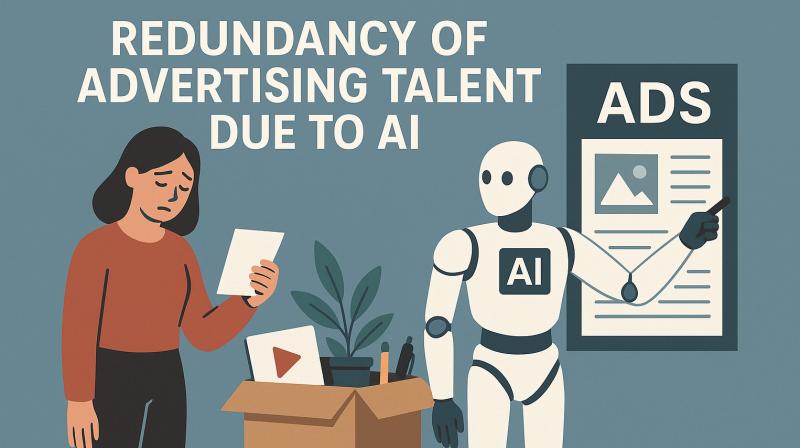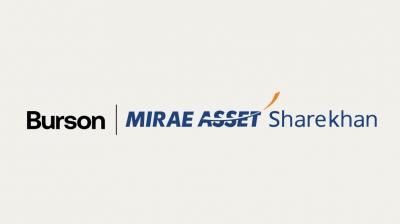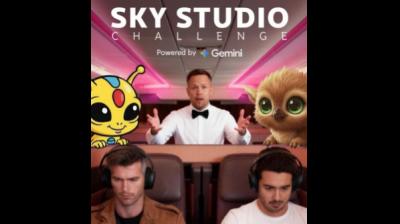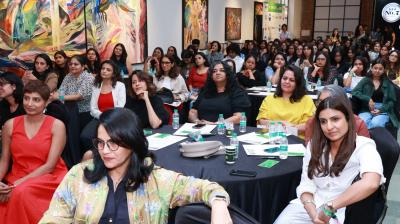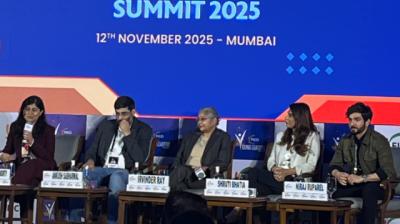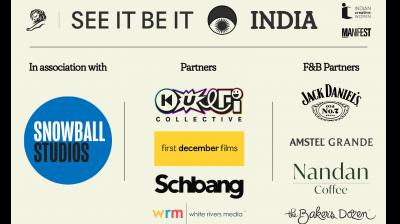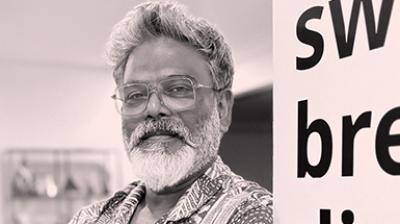The advertising world is no stranger to disruption—but what it faces now is more than a shift; it’s a shockwave. Generative AI is not merely a new tool; it is an entirely new creative force. In a matter of months, AI has moved from peripheral support to the heart of ideation, production, and distribution. The question is no longer 'if' AI will change advertising—but whether the industry can survive the change it helped catalyse.
The advertising industry is facing its most existential threat yet—not from regulation or client churn, but from within. Generative AI has changed the game completely. From writing copy and generating voiceovers to crafting stunning visuals, building immersive campaign experiences, and even creating synthetic brand ambassadors like virtual influencers, every aspect of the creative process is now being challenged—and in many cases outperformed by machines.
The recent campaign by Maxi-Cash in Singapore featuring virtual personality Haley K. is not just a gimmick. It’s a clear signal of how quickly AI-generated talent is being adopted. Haley K. doesn’t ask for breaks, doesn’t age, and doesn’t need makeup. She can be anywhere, in any mood, and any costume with the click of a button.
And the threat is not external. The destruction of the industry is being driven by its clients—brands that are increasingly tech-savvy, leaner in operations, and aware that many of the services traditionally handled by agencies can now be done faster, cheaper, and with greater precision using AI.
We are not witnessing a battle of tradition versus technology. We’re watching the clever outmanoeuvre the colossal. The smaller, agile players with access to AI are outpacing the creative dinosaurs.
Notable AI-driven campaigns illustrating the shift:
- Maxi-Cash (Singapore) – Haley K., a virtual influencer, fronted an entire campaign (ongoing).
- Maybelline (UK/Global) – Used AI to enhance mascara application in tube station ads digitally.
- Coca-Cola’s "Create Real Magic" (Global) – Invited users to co-create ads using OpenAI + DALL-E.
- Lay’s (India) – Used AI-generated artworks from fans to feature in digital campaigns.
- Qatar Airways (Global) – AI-created visual campaigns personalised to different customer segments.
- LG AI Artist Collaboration (South Korea) – AI co-created music videos and promotional content.
- SK-II’s YUMI (Japan) – AI-powered brand ambassador delivering personalised skincare advice (ongoing).
- NTT Docomo x AI AVATARS (Japan) – Used virtual personalities for retail ad testing.
- Unilever’s Data-Centric Campaigns (Global) – Automated creatives optimised for micro-segments using AI.
- Puma x Midjourney x India Creators (India) – Co-created AI-generated art and digital avatars.
(Sources: AdWeek, Campaign Asia, Marketing Interactive, TechCrunch, PR Newswire, WARC Reports)
This is not just another innovation cycle—it is a creative upheaval. Generative AI doesn’t augment creativity—it redefines it. And those in the advertising world who fail to adapt risk extinction. In the next chapter, we’ll look at which roles are under the greatest threat and the AI tools that are quietly replacing them at scale.
Creative industry job titles at risk and the AI tools replacing them
When the foundation of any industry shifts, the first tremors are felt by its people. In advertising, that means creatives, designers, copywriters, and production crews—many of whom now find themselves being replaced by prompt-based AI tools that don’t tire, negotiate, or require human conditions to deliver results. This part of the series examines the stark reality: who is being replaced, by what, and why it matters more than ever.
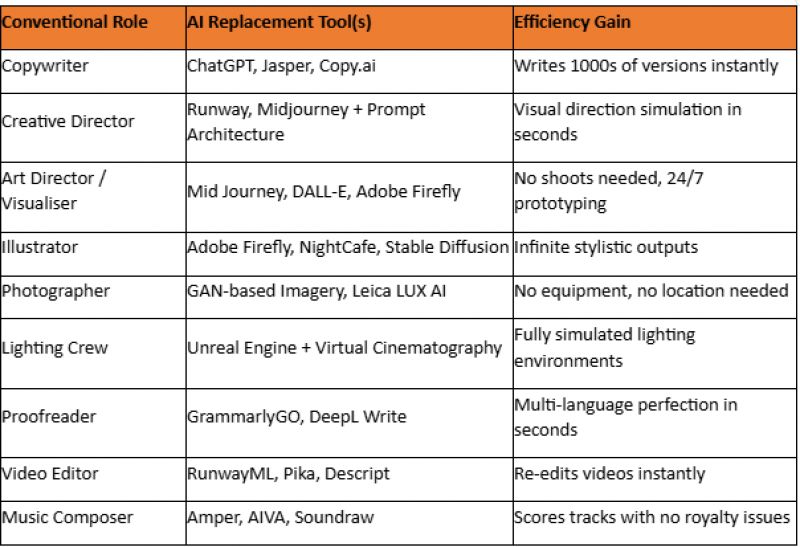
AI doesn’t tire, doesn’t go on leave, and doesn’t miss deadlines. It can produce 1,000 variants overnight and adjust based on micro-targeting data. Agencies relying on human-only outputs are no longer competitive on speed, price, or scale.
So, no job is sacred in a world optimised for speed, precision, and automation. The advertising industry must now come to terms with its collapsing middle—the traditional roles that once formed the core of its talent pool.
Where can the displaced talent go? A map for creative survival
The narrative of job loss must shift to one of opportunity. With every industrial transformation, new roles emerge as old ones fade. The advertising industry is not dying—it is mutating. For those willing to evolve, a new class of AI-aligned creative roles is rapidly emerging. This chapter outlines where displaced talent can redirect their skills to stay not just employed, but relevant and impactful.
All is not lost. While AI displaces, it also creates adjacent opportunities for those willing to evolve:
- Prompt engineers – Copywriters and designers can retrain to become prompt engineers who know how to coax brilliance out of generative models.
- AI creative directors – Humans guiding AI aesthetics, brand tonality, and values integration.
- Creative quality auditors – Ensuring AI output is on-brand, ethical, and audience-fit.
- AI-inclusive campaign strategists – Blending human insight with machine generation for hybrid campaigns.
- Training AI on local culture – Illustrators and art directors can help AI learn local aesthetics.
- Ethics and brand safety officers – New roles overseeing the responsible deployment of generative content.
History is repeating itself. Studio artists and airbrush professionals were lost to desktop publishing in the 1990s. Typesetters became obsolete with the rise of word processors. Printing studios dissolved in favour of online publishing. Today, media agencies are at risk of becoming irrelevant due to Microsoft’s integration of AI media planning into its Copilot ecosystem.
So, survival lies not in resisting change, but in mastering it. The creative professionals who adapt will become the new architects of AI-led storytelling.
What must the advertising industry do to survive the AI onslaught?
The time for denial is over. Advertising agencies must now enter their age of reinvention. This final part of the series is a strategic blueprint—part wake-up call, part survival guide. The goal is not just to protect creative jobs, but to reshape them for an AI-powered future where intelligence, imagination, and intuition must coexist.
- Adopt before you’re replaced – Agencies must invest in in-house AI capability. Train staff. Hire AI-native talent.
- Rethink creative billing – Move from time-and-effort billing to value-and-outcome-based pricing.
- Offer AI-augmented services – Clients will pay for strategic augmentation, not just production.
- Collaborate with clients’ AI ecosystems – Partner, don’t compete with client-side tech capabilities.
- Create AI proof-of-concept labs – Let brands experience the speed, power, and flexibility of AI-led creativity.
- Develop IP, not just campaigns – Create proprietary AI tools, models, and libraries as defensible assets.
- Reskill and upskill constantly – Establish ongoing L&D on generative tools, ethics, and prompt design.
So, the creative world is standing at a crossroads—one path leads to a slow fade into irrelevance, the other toward intelligent reinvention. By acknowledging the disruptive force of AI and leaning into its potential, the advertising industry can avoid self-destruction.
Those who move with intent, empathy, and innovation will lead the next golden age of advertising.
The future doesn’t need fewer creatives—it needs evolved ones.
The author is the global head - growth and consulting, Acorn Management Consulting.

